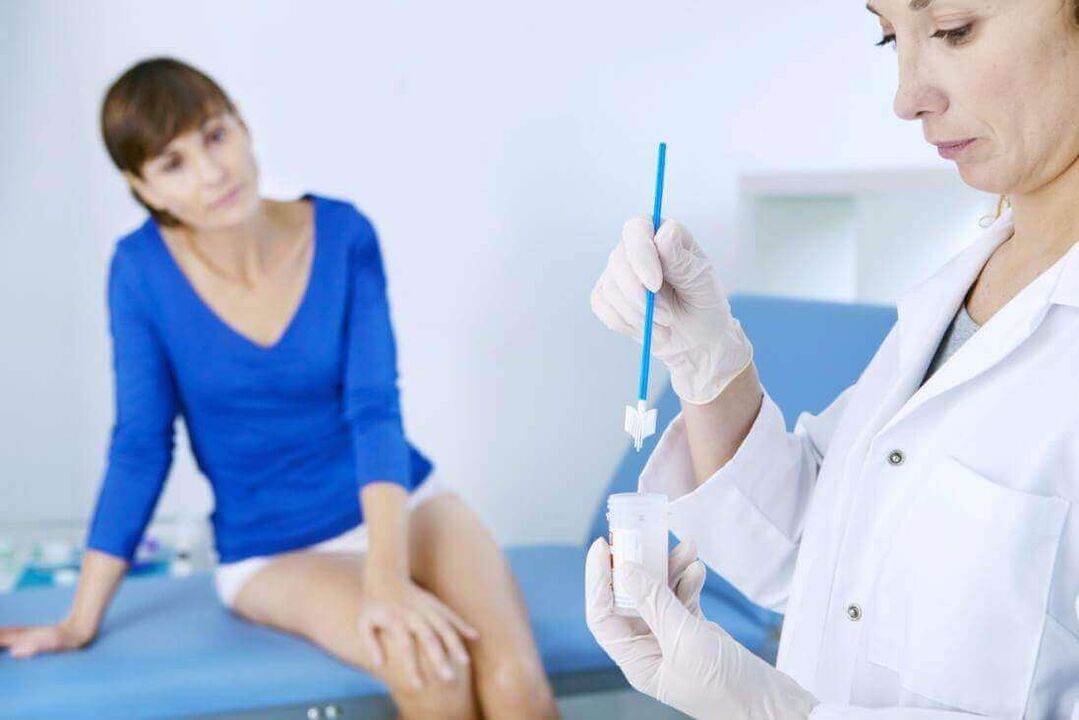
Papillomas are a problem that many people face. It can be seen in different parts of the body, in some cases it is extremely painful, in others it does not cause discomfort. In any case, they turn into very annoying cosmetic defects. The alarm is not unfounded, because a virus that causes the formation of skin formations can cause oncology.
The majority of the world's population is infected with HPV. This does not mean that we are threatened by a massive epidemic of cancer and other diseases that can occur against the background of a weakened immune system and the appearance of warts, condyloma and other skin defects. The main task of the patient is to reduce the risk of oncogenes. This is possible by regular visits to a dermatovenerologist, the necessary examinations and timely removal of formations.
Why papillomas appear on the body
There are many reasons for the activation of the virus. The most common is a decrease in immunity, which leads to uncontrolled cell proliferation. The innovations look like this.
People at risk are also naughty, often change partners, and do not use reliable contraceptives. If a woman has HPV, she can pass it on to her baby at birth.
The way the virus enters the body can be different. This is the unprotected contact and skin-to-skin contact with the carrier already mentioned. Therefore, it is important to follow the simplest rules of hygiene: wash your hands after traveling on public transport, do not walk barefoot in humid and hot pools and saunas - it is high humidity, which creates a favorable environment for infection. .

Human papillomavirus: what it is and how it is transmitted
HPV is a virus whose activity manifests itself in changes in the nature of tissue growth. It enters the body mainly through the mucous membranes:
- mouth - during oral sex;
- genitals - during unprotected intercourse;
- rectum - during anal sex.
As long as a person's immunity is strong enough, the infection does not manifest itself - in this case it is called latent. As the defenses decrease, they become active and cause the cells to multiply. The result of unbalanced tissue growth is the appearance of neoplasms - the risk of becoming benign, malignant.
The appearance of tumors of various shapes and sizes on the skin is the main symptom of human papillomavirus. Condyloma and other types of warts are often seen in areas exposed to mechanical stress, characterized by increased sweating (armpits, palms). They can also occur in the genitals and around the anus.
The main routes of infection
- Sexual - Occurs during sexual intercourse with a person carrying HPV. The virus can be transmitted during oral and anal sex.
- Household - less common, but still one of the main ones. The infection can be obtained in baths, swimming pools, saunas, showers. Penetrates skin through wounds, cracks & other injuries
- Transmission at birth - the transmission of HPV to the newborn is the rarest. However, it is also one of the most dangerous due to the risk of damage to the respiratory tract.
- Spontaneous infection is also possible - the infection occurs when it passes from one part of the body to another (shaving the legs with a machine, removing unwanted hair).
Oncogenic viruses in the body do not indicate the development of cancer. However, they can cause malignant neoplasms. The main factors of carcinogenesis are:
- Immoral sex, many partners - including those with papillomas, condyloma and genital lesions.
- Presence of venereal and fungal diseases.
- Long-term use of oral contraceptives, intrauterine device.
- Some gynecological diseases (endometriosis).
Papillomas are transmitted, why do they grow and are dangerous? We have answered all these questions above. Do I need to have the tumors removed? Yes, for several reasons:
- These, unlike moles, are cosmetic imperfections that do not add charm, but cause serious discomfort - both psychological and physical.
- Because growths occur in areas that are most exposed to constant friction, there is a high risk of mechanical stress and damage from tight shoes, tight-fitting clothing, and underwear. And this leads to the introduction of new infections.
- Accumulation of HPV causes pathological changes in the cell genome, which can lead to oncological and other complications.
Earlier we told what papilloma is and why these neoplasms appear in the body. We recommend responding to all changes in skin condition. At the same time, you should not try to get rid of the problem yourself to avoid the risk of skin infection and the development of benign warts into malignant tumors. In modern medicine, there are effective non-surgical treatments that can help you forget about cosmetic defects forever and reduce the risk of developing oncology.
Types of papillomas: main types and characteristics

- Flat warts are most often round or oval. Similar to burns obtained after contact with nettle leaves, they do not rise above the surface of the epidermis. They often occur during adolescence. Locations: neck, hands, face, legs. The color is pinkish-yellow. Often such formations are itchy and cause discomfort.
- Vulgar - the most common variety. Most often seen on the feet, hands, rises 3-10 mm above the skin. An entire wart colony can form - from a mother and a daughter.
- Sharp-pointed - most often occurs in the anogenital zone, they are small protrusions with a single node or many small formations. Color - pink or red. All neoplasms of different sizes. They are either located directly on the skin or attached to it with "feet", causing itching and discomfort, and requiring timely removal. Such warts are called warts and are transmitted sexually.
- Filamentous - these are the papillomas we started talking about at the beginning of the article. They are most often seen in people over the age of 35, and their growth increases with age. There is another name for this phenomenon - chords. These are small nodules on the skin that grow into an oval, elongated filament. This type of wart is found in areas with thin skin and easily formed wrinkles, as well as in areas characterized by excessive sweating - in the neck, armpits, under the breasts, groin, near the eyes, eyelids, etc. .
- Bladder and urethral papillomas - this type of neoplasm is most common in men. Symptoms: pain during urination, pain in the lower abdomen, hematuria. Large growths can be removed surgically. The diagnosis and treatment of this condition is performed by a urologist, not a dermatovenerologist.
- Defeat of the larynx, trachea, oral cavity - in this case, the warts look like a gradually growing papilla, which causes a narrowing of the lumen of the respiratory tract. If the vocal cords are affected, speech disorders are possible. This manifestation of the virus is especially dangerous for babies who can transmit the infection to their newborns.
We studied the types of papillomas and the reasons for their appearance in the body, we learned why and where non-aesthetic neoplasms appear and why they are dangerous. It remains to understand how to get rid of a cosmetic defect that can lead to serious complications.
Features of diagnostics
Consult a dermatovenerologist to find out which method will be most effective. He will order an HPV test (PCR). The method used is one of the most informative. It will help determine the DNA of the infection in various secretion samples, as well as the type of virus.
You may also need:
- Colposcopy.
- ointment for cytology.
- Histological analysis.
How to remove papillomas
- Cauterization - highly purified chemicals - is produced by special preparations containing active components that affect neoplasms.
- Extraction with liquid nitrogen - exposure to the affected area of skin at low temperatures. There is a sudden freezing of the affected area, as a result of which the place of formation of the neoplasm loses its sensitivity from pink or red to white. After a few weeks, the area treated with nitrogen heals. Disadvantage of this method: the difficulty of determining the depth of exposure.
- Laser removal - in this case, the papillomas are burned with a laser beam. After the session, a small wound remains on the skin that needs to be treated regularly. Heals within a few weeks after cauterization. There is no rehabilitation period, because the recovery process takes place without the intervention of specialists. At the same time, there are no wounds or scars at the site of warts. The disadvantage of this method is that it is not prescribed for various lesions of the epidermis, herpes and infectious diseases. Pregnancy is a contraindication to laser catheterization.
- Electrocoagulation is another method based on the effect of an electric current. High temperatures cause the destruction of papillomas. However, when treating the skin in this way, damage to healthy areas is inevitable, which increases the healing time.
- Surgical removal is prescribed when the neoplasms have reached a large size and other methods are ineffective. The doctor uses local anesthesia. After the operation, stitches are made. They are removed a week after the wart is removed.
- Folk remedies - most papillomas use celandine juice, vinegar, garlic. It is believed that it helps to burn the neoplasm. These methods are dangerous and cannot reduce the risk of relapse. They often damage the healthy parts of the skin that surround the growth. We advise you not to treat yourself, but to consult a doctor in time - only he can determine which of these methods is most effective in solving the problem.
Often a dermatovenerologist asks if it is possible to permanently get rid of HPV, which causes unpleasant rashes. We remind you that the virus itself, which is in the human body and causes the proliferation of uncontrolled cells, can not be removed - it stays inside and will manifest itself in moments of weakening of the immune system, hormonal disorders, stress. Thus, the treatment of the infection has not yet been invented. Only its external manifestations are eliminated - warts, papillomas and other types of warts.
The main task of an HPV carrier is to reduce the risk of relapse. To do this, you need:
- Follow the rules of personal hygiene - including intimate.
- Use condoms during sex, avoid sexual intercourse.
- Protect your body's defenses.
- Avoid direct contact with infectious agents.
Among the drugs that help to get rid of papillomas and reduce the risk of their recurrence is a drug that contains anti-inflammatory cytokines that inhibit the synthesis of viral proteins. You can use this cream at home - it is applied once a day during the course of treatment prescribed by your doctor.
Filiform warts are a phenomenon that indicates the need for a complete examination of the body. Remember this and go to the doctor on time. Delay increases the risk of cancer. Do not try to remove the neoplasms yourself - folk methods are not very effective and can not guarantee the complete disappearance of the accumulation. In addition, they can cause severe skin irritation and damage, which can lead to secondary infection and aggravate the condition. Use only expertly recommended methods. Together with preventive measures, they will help prevent relapses and forget about the problem for many years.















